In Japan there is an ancient craft passed down between woodworkers and artisans known as jigoku-gumi. Literally, “interlocking hell,” the complex technique can be observed, on a smaller scale, in the wooden frames of shoji screens. The fear-inducing name seems to have been derived not only from the complexity and difficulty of the craft, but also because it is near-impossible to disassemble once complete. In fact, jigoku-gumi was used to create the 635-year old shoji screens in Kyoto’s Toji Mieido temple (renovated in 1380), as well as the 815-year old fusuma sliding doors in Wakayama’s Kongōbu-ji temple. In other words, jigoku-gumi is not meant to be taken halfheartedly.
But reviving the technique, and taking it to awe-inspiring heights, is the architect Kengo Kuma, who just completed SunnyHills in the posh neighborhood of Minami-Aoyama, Tokyo. Nestled amongst designer boutiques like Herzog & De Meuron’s Prada building and the Nezu Museum, designed by Kuma himself, the bold structure of entwined wood feels right at home.
And there’s nothing hellish about SunnyHills, the first Japanese location of a popular Taiwanese pineapple cake shop. The 3-story structure, which opened in late December of last year, has made it their mission to offer visitors free tea and cake, even if they are not buying anything. “That’s just the spirit of Taiwanese hospitality,” says Michael Sheu, an IT exec who discovered he had a sweet tooth at age 50. Sheu is capitalizing on a pineapple cake market that has grown in size from $100 mm 5 years ago to a little under a billion dollars.
Once you walk through the entrance of the wooden latticework on the ground floor, you’re immediately transported into a forest of light filtering through the cracks. It’s easy to get lost in the shadows, as well as the aroma of Japanese hinoki wood. When asked why he transferred from IT to confectionary Sheu responded that it was because he wanted to return to more simpler times. He wanted to create a forest of wilderness that recalled his days as a child growing up in the mountainous regions of Taiwan.
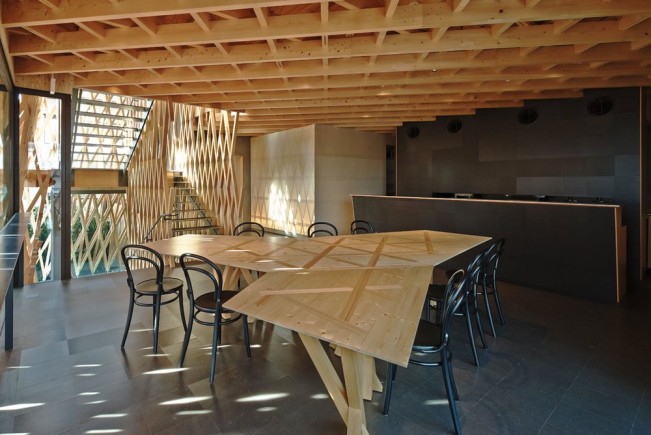
image courtesy flickr user Ken Lee | click to enlarge
Source: Asahi | Hachise | SunnyHills

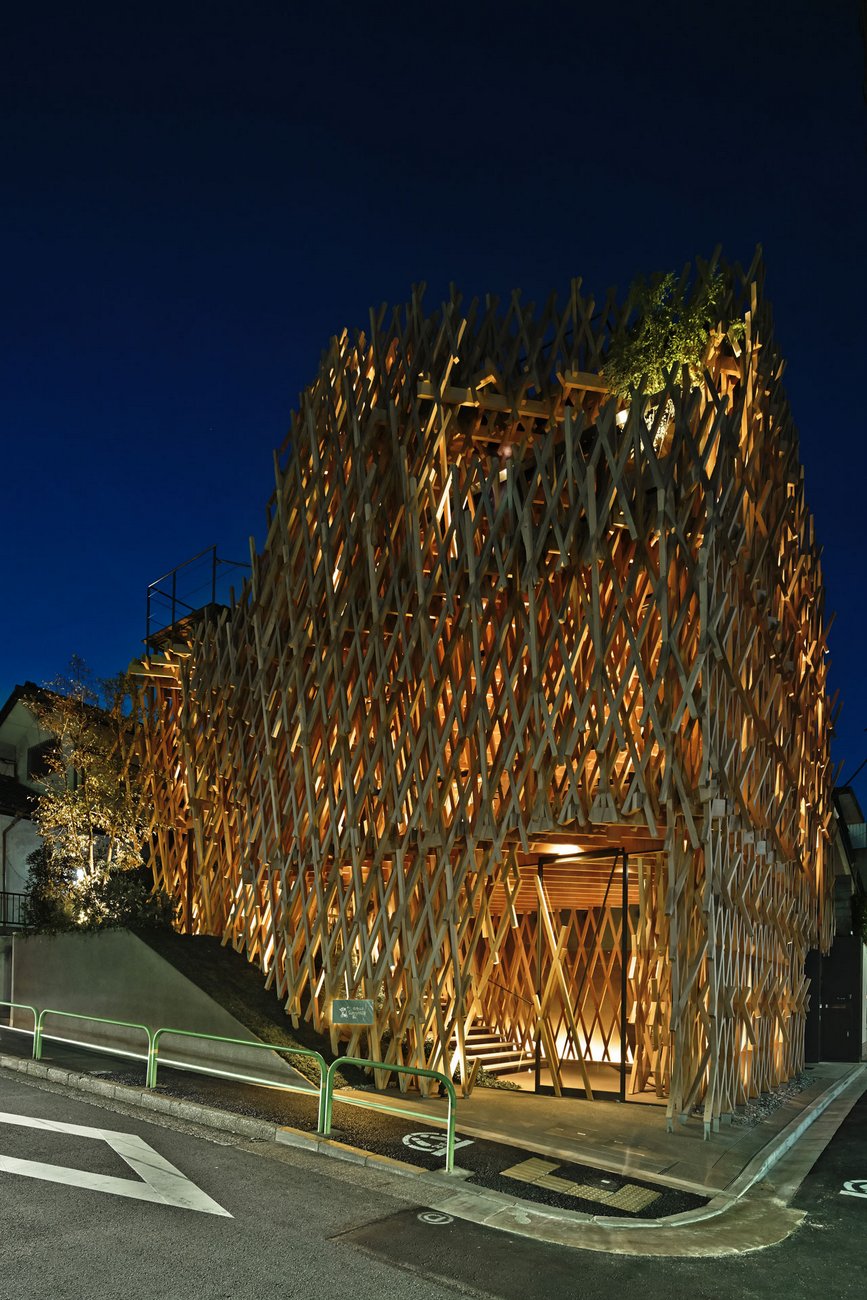
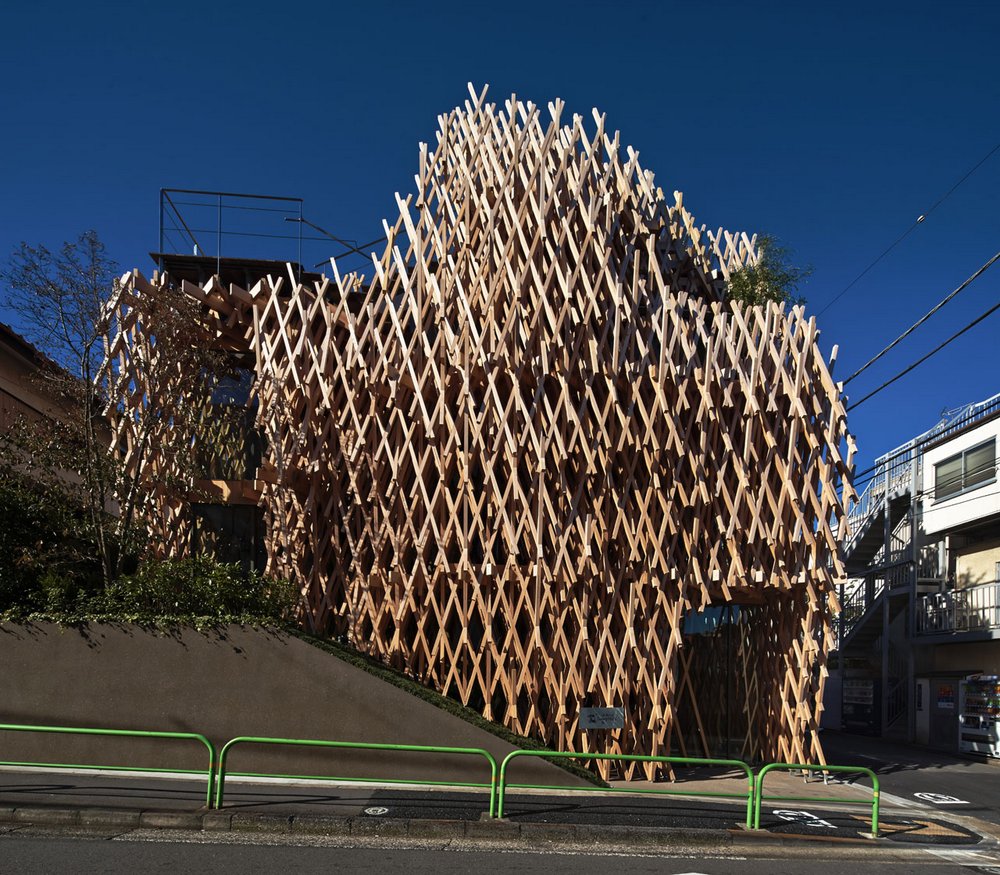
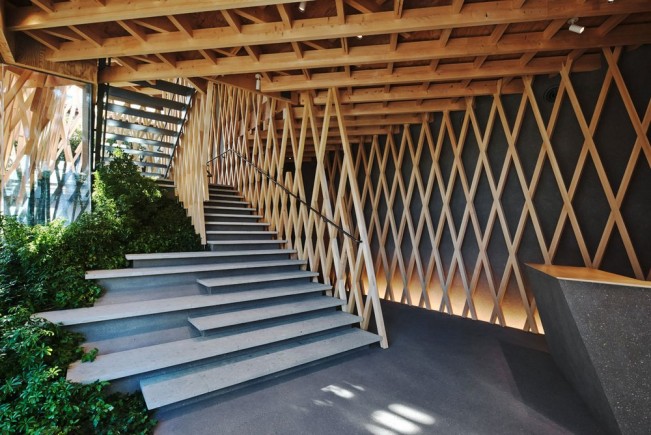
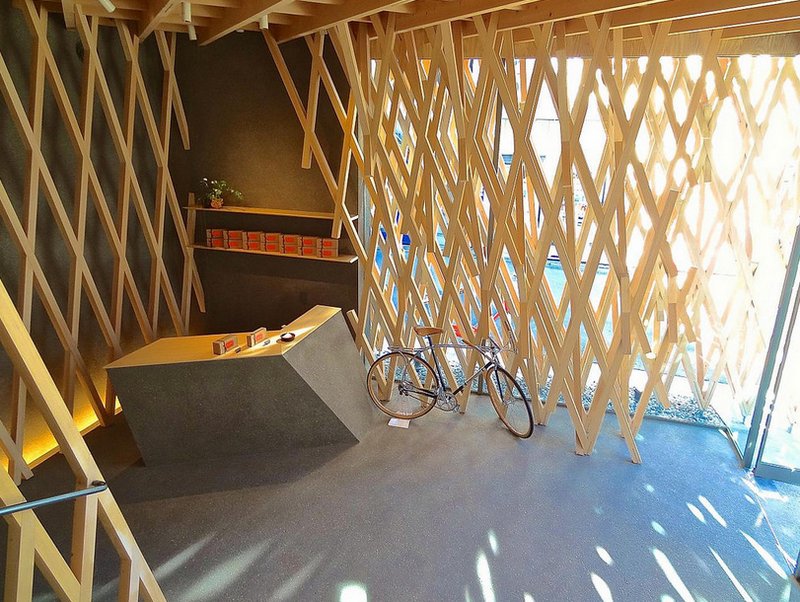
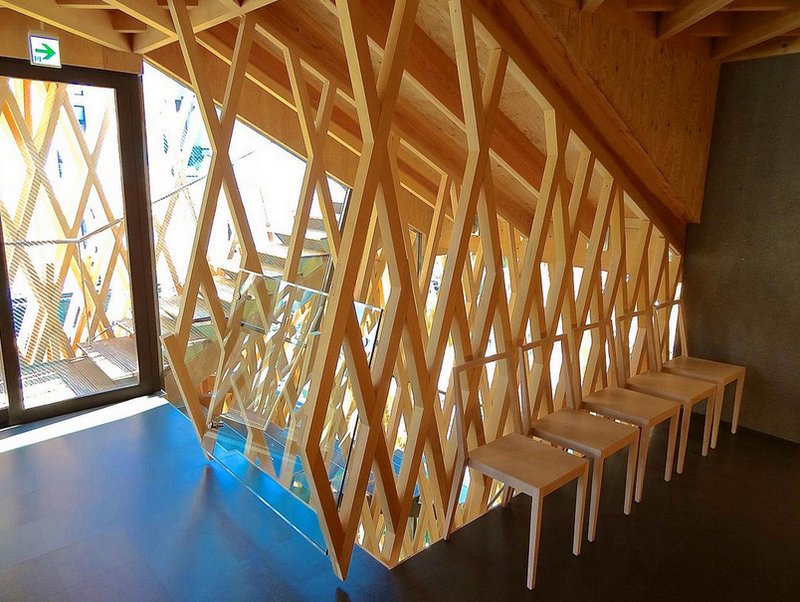
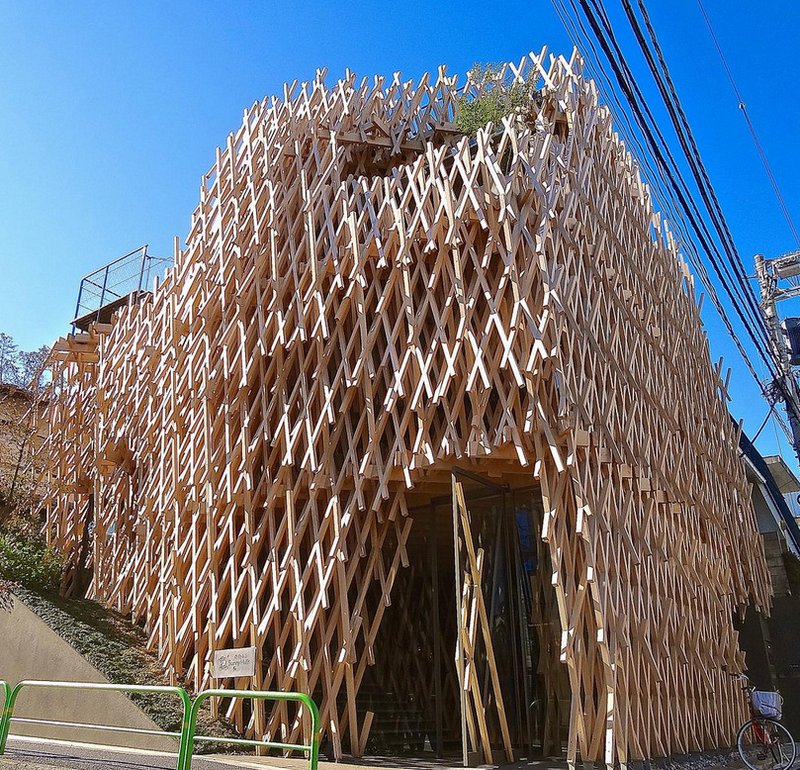
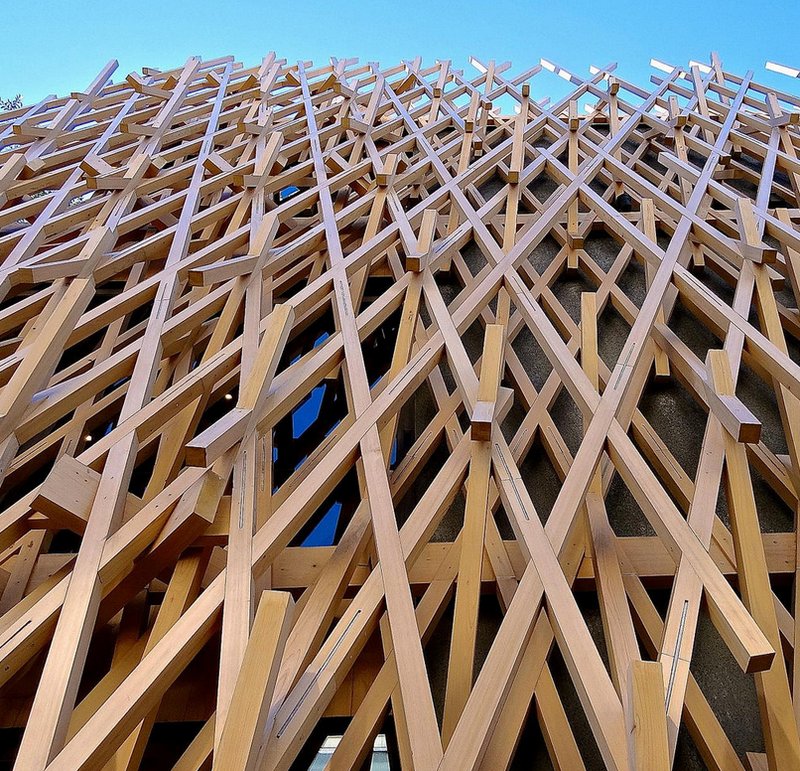
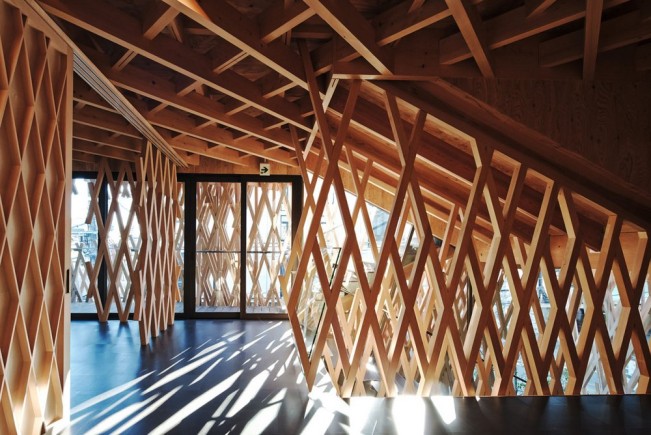

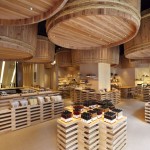
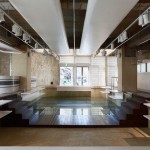




















February 19, 2014 at 3:54 pm
I thought it would flex and shrink!
Very cool to be used as an office.
February 19, 2014 at 5:35 pm
I’m afraid you missed the point in regards to ‘jigoku gumi’, which is more properly called chidori-gōshi (千鳥格子), or ‘houndstooth-check pattern lattice’. The term jigoku gumi, loosely translating as ‘hell-combining’ is NOT “derived not only from the complexity and difficulty of the craft, but also because it is near-impossible to disassemble once complete”, rather it is termed ‘hell’ because the construction appears to be impossible to put together or take apart, and hell is a place from which there is supposed to be no escape. The joinery for this lap construction, which presents an ‘impossible’ weave, providing it was not glued together, can be dismantled.
In fact, the term jigoku gumi is not the most appropriate, as the latticework can be disassembled, so ‘escape’ is possible, unlike in hell.
There is mortise and tenon joint used in Japanese carpentry called ‘jigoku-hozo’ or hell-tenon, which is wedged internally when driven together and cannot be taken apart again. There the name makes more sense. Hope that was helpful!
February 19, 2014 at 6:07 pm
@Chris – thanks for your input. That was very valuable!